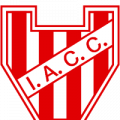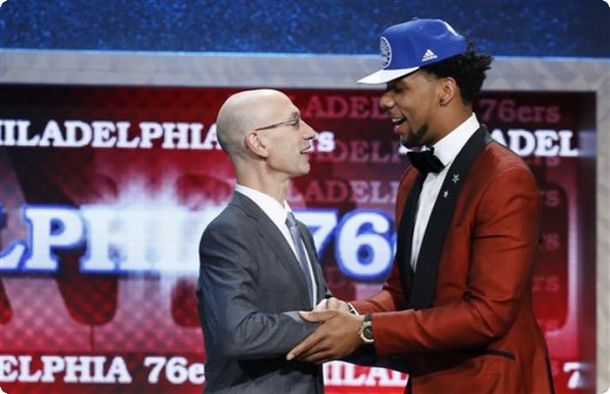Cut Sam Hinkie some slack here. He can't control where the ping pong balls fall. Sometimes you have no choice but to play the hand you've been dealt.
In last week's draft, the Philadelphia 76ers general manager made the right decision, the only decision, just like he did in last year's draft when he took Joel Embiid, just like he did two years ago when he jettisoned Jrue Holiday and got this far-reaching but necessary rebuilding project underway. Going another way in any of the past three drafts would have invalidated his "plan" to build a team that's capable of far more than simply reaching the playoffs.
Don't let the logjam of big men on this team throw you off. It's a temporary problem that will eventually be resolved. There's still a plan in place. Last week's first-round selection, the only one that mattered, reaffirmed that.
Hinkie recognizes that he, partly as a consequence of bad luck, has an overcrowded frontcourt. He understands that bigs Nerlens Noel, Embiid and Jahlil Okafor, whom the team selected with the third overall pick last week, all can't remain on the roster. Two of the three, sure. But all three? No way, especially with 6-foot-10 Dario Saric waiting in the wings. Hinkie is unpredictable and daring, but he isn't flat-out stupid. He knows he has to move at least one of those guys in order to acquire assets or, preferably, actual players that can address the team's most glaring needs, particularly in the backcourt.
First thing's first: Hinkie has to find out what's really going on with Embiid's right foot. Is the injury to the navicular bone in the foot career threatening, or has the latest "setback" in the 7-foot Cameroonian center's rehabilitation process been blown out of proportion? Until Hinkie gets answers, the Sixers are in a holding pattern. But once a definitive prognosis becomes clear, you can rest assured Hinkie will start making moves that ultimately will even out the roster. Give it time. It'll happen.
Where the Sixers go from here is uncertain. But there should be nothing unclear about the team's intent. The selection of Okafor last week didn't make Hinkie's concept more difficult to comprehend, not if you're looking at the big picture, not if you have a true understanding of the team's plight.
This franchise, like any franchise, needs a star. Ok, stars. Stars are hard to come by, at any position. The Sixers haven't had a legitimate mainstay since Allen Iverson's heyday and have been stuck in neutral ever since. Obtaining a cornerstone via free agency hasn't been a realistic option for the organization for quite some time. Established, franchise-caliber players don't want to join a team that's been out of the first round only twice since reaching the NBA Finals in 2001. Not that there weren't attempts to find value on the free agent market. The team, armed with real spending money for the first time in, well, a really long time, signed a premier free agent, Elton Brand, in the summer of 2008 on the heels of a surprise postseason appearance. But Brand turned out to be a bad fit and a shell of himself. Then in the summer of 2012, fresh off a deep playoff run made possible by Derrick Rose's ACL injury, the Sixers went the trade route to seek out a star, dealing away the likes of Andre Iguodala and Nikola Vučević and other assets in a multi-team trade for Andrew Bynum, who the front office had hoped would embrace the role of go-to guy and make the team a contender, at least in the East. Bynum's faulty knees obliterated those plans.
On top of all that, Evan Turner, the second overall pick of the 2010 draft, and the team's first top-five pick in 13 years, became a bust.
So what was Hinkie to do for an organization that's been trying to catch difference-makers with vinegar? When he arrived in Philadelphia, a massive overhaul had long been overdue. About six years overdue. But the previous regimes chose to ride the waves of immediate playoff berths, believing the Sixers were a team on the rise. Hinkie has taken a lot of flak during this process. His every move has been dissected, second-guessed and panned. But he doesn't get any credit for daring to think big. Bad contracts, regrettable trades and underwhelming free agent signings crippled this organization before he came on the scene. Fans are quick to voice their displeasure with the current situation, but they weren't coming out in droves to the games anyway. After finishing in the top five in average attendance from 2001 - 2004, the team has finished in the top 10 just once (in 2005) and in the bottom half of the league nine of the last 11 seasons; in 2014 and 2015, predictably, the Sixers finished next to last and dead last, respectively, in average attendance. The point is, a radical approach is needed here.
A lot of folks don't like the Okafor pick for the Sixers purely because the roster contains a mess of big bodies, as if the team really intends to move forward with a team that's literally head and shoulders above the competition from top to bottom. Did the Los Angeles Lakers taking D'Angelo Russell, who was very much on the Sixers' radar, make it easier on Hinkie to select a Kristaps Porzingis or an Emmanuel Mudiay? Sure it did. But those players, on the surface, presented more unknown variables than Okafor, hence why they were still available when it came time for Philly to pick. Passing on those guys may prove to be a mistake, but when you're on the hunt for a pillar, you have to go with what appears to be the surest thing and worry about the rest later.
The Sixers need many things, elite players being at the top of the list. In many circles, Okafor was projected as the top pick in the draft; virtually nobody saw him falling lower than number three. Picking third, as Hinkie has learned the hard way, can really put you in some tricky situations. Hinkie, who also had the third pick in last year's draft, figured to come away with either Andrew Wiggins or Jabari Parker, but Embiid's foot injury made Hinkie's decision for him. Embiid, like Okafor, was widely considered the top prospect of his class. No one ever truly knows if an injury suffered by a player right before the draft is career threatening. No one ever knowingly purchases damaged goods, either. Hinkie, though, didn't have much of a choice. There was potentially as much reward as there was risk in taking Embiid. Bypassing him and drafting a potentially good, but not potentially great player (per immediate projections) would have sent the message that Hinkie is mostly interested in returning the Sixers to the playoffs, not taking them further. Taking someone other than Okafor would've sent the same message. Good enough can't be the standard for this team, not at this point in time.
And know this about the Holiday-for-Noel swap with the New Orleans Pelicans from draft night two years ago, which has recently become news again: Dealing a good point guard who isn't superstar material for a would-be number one overall pick, had it not been for a knee injury that naturally scared other teams away, was a shrewd first move. It showed Hinkie has guts. It takes guts to build an exceptional team from scratch. Being conservative won't get you far in the NBA. It's good to know Hinkie at least understands that much. (By the way, not that Hinkie didn't withhold or attempt to withhold information about Holiday's health, but just what kind of physical did the Pelicans have Holiday undergo?)
The uproar over Hinkie's vision is especially baffling when you consider that his blueprint is a carbon copy of the master plan the Minnesota Timberwolves have been implementing for at least the last eight years. The Timberwolves have shamelessly been stockpiling losses and lottery picks in plain view, amid hardly any pushback. Think Saric, who was selected 12th overall by the Orlando Magic in the 2014 draft and immediately dealt to the Sixers, remaining overseas until who knows when is absurd? Minnesota has been there, done that. It waited two seasons to watch Ricky Rubio, the fifth overall selection of the 2009 draft, play in an NBA game. But look at Wolves now. They have potential cornerstones in Andrew Wiggins and Karl-Anthony Towns, among other players with real potential, and a bright future. What changed their fortune? Losing. Lots and lots of losing.
Apparently, despite fielding noncompetitive teams year after year (they haven't had a winning campaign since the 2004-05 season), the Timberwolves somehow have been able to fool most into thinking that winning is their intent. Either that or people think so highly of their players and their development process that they're willing to ignore the fact that they don't win very often. Or maybe nobody cares because they're in a small market.
Tanking isn't pleasant. It's not supposed to be. The decision-makers hate it just as much as the fans do. Probably more. The truth, however, is that the Sixers don't have any better options. Pushing the reset button was the right call. Hinkie's plan won't be executed seamlessly. He's made no promises. There will be draft busts taken along the way. Hinkie will also make the occasional head-scratching transaction, like the Michael Carter-Williams trade to the Milwaukee Bucks. Those are sometimes the consequences of relying on your gut feeling, which every executive must do. At least Hinkie isn't sugarcoating things. Let's see, use high draft picks to take players with the best potential, and use said players, along with ample salary-cap space, to build a foundation that will attract marquee free agents who wouldn't join your team otherwise. Makes sense. It's worked for other teams. It can eventually work for the Sixers. It's chancy. It'll require major luck, particularly at the draft lottery, where the Sixers have been unlucky as of late. But it can work.
What does this team have to lose? Hinkie wants to build a team that can win multiple championships, and there's nothing wrong with that. He's not interested in a team that will amount to nothing more than playoff fodder. Judging by the attendance figures, neither are Sixers fans.









































